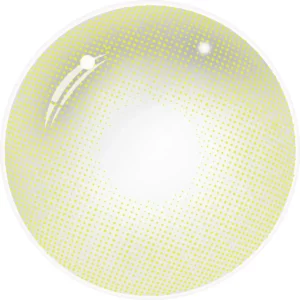Preventing green-colored contact lenses from drying out involves proper storage, hydration, and care.
Here are some tips to keep your green-colored contact lenses moist and comfortable:
- Use Moisturizing Contact Lens Solution: Choose a multipurpose contact lens solution that is specifically formulated for moisturizing and hydrating contact lenses. Look for solutions labeled as “moisturizing,” “hydrating,” or “comfort” to help prevent dryness.
- Keep Lenses Hydrated in Storage: When storing your green-colored contact lenses in their case, ensure that they are fully submerged in contact lens solution. Avoid letting the lenses come into contact with air, as this can lead to evaporation and drying out. Fill the storage case with fresh solution each time you store the lenses.
- Use Rewetting Drops: If you notice that your green-colored contact lenses are starting to feel dry or uncomfortable while wearing them, use rewetting drops specifically designed for contact lenses. These drops provide instant relief by adding moisture to the lenses and eyes.
- Avoid Excessive Wear: Limit the amount of time you wear your green-colored contact lenses, especially in dry or air-conditioned environments. Extended wear can increase the risk of lens dehydration and discomfort. Follow the recommended wearing schedule provided by your eye care professional.
- Stay Hydrated: Drink plenty of water throughout the day to maintain hydration levels in your body, including your eyes. green colored contact lenses Dehydration can contribute to dryness and discomfort when wearing contact lenses.
- Protect Lenses from Environmental Factors: Avoid exposing your green-colored contact lenses to extreme temperatures, direct sunlight, or windy conditions, as these factors can contribute to lens dehydration. Store your lenses in a cool, dry place away from heat sources and sunlight when not in use.
- Clean Lenses Regularly: Proper cleaning and disinfection of your green-colored contact lenses help maintain their hydration and comfort. Follow a daily cleaning routine using a multipurpose contact lens solution to remove debris, protein deposits, and other impurities that can contribute to dryness.
- Replace Lenses as Recommended: Replace your green-colored contact lenses as recommended by your eye care professional or the manufacturer. Over time, contact lenses can accumulate deposits and lose their ability to retain moisture, leading to dryness and discomfort.
By following these tips and incorporating proper hydration and care into your contact lens routine, you can help prevent your green-colored contact lenses from drying out and maintain comfortable wear throughout the day. If you experience persistent dryness or discomfort, consult your eye care professional for personalized advice and recommendations.
How do you know if white colored contact lenses are the right fit for you?
Determining if white-colored contact lenses are the right fit for you involves considering several factors related to safety, comfort, and personal preference.
Here are some key considerations to help you decide if white-colored contact lenses are suitable for you:
- Consultation with an Eye Care Professional: Before purchasing white-colored contact lenses, schedule a comprehensive eye examination with an eye care professional, such as an optometrist or ophthalmologist. They can assess your eye health, measure your corneal curvature, and determine your suitability for contact lens wear.
- Lens Fitting: During your eye examination, discuss your interest in wearing white-colored contact lenses with your eye care professional. They can perform a contact lens fitting to ensure that the lenses fit properly on your eyes and provide optimal vision and comfort. Proper fit is essential for safe and comfortable contact lens wear.
- Prescription Requirement: Depending on your location and the specific type of white-colored contact lenses you choose, white colored contact lenses you may need a prescription from an eye care professional to purchase them. Even if you do not require vision correction, a prescription ensures that the lenses are fitted properly to your eyes.
- Trial Period: If you are considering white-colored contact lenses for cosmetic purposes, ask your eye care professional if they offer trial lenses for you to try before committing to a full supply. This allows you to assess the comfort, appearance, and overall suitability of the lenses for your eyes.
- Comfort and Vision: Evaluate how comfortable the white-colored contact lenses feel on your eyes during the trial period. They should not cause excessive dryness, irritation, or discomfort. Additionally, assess whether the lenses provide clear and stable vision without causing visual disturbances or distortions.
- Appearance: Consider whether the appearance of white-colored contact lenses aligns with your desired aesthetic or costume. Try different styles and designs to find the one that complements your overall look and achieves the desired effect. Keep in mind that white-colored contact lenses may significantly alter your eye appearance and may not be suitable for everyday wear.
- Handling and Care: Assess your ability to handle and care for white-colored contact lenses properly. Follow the recommended cleaning, disinfection, and storage procedures provided by your eye care professional or the lens manufacturer to ensure safe and hygienic contact lens wear.
- Allergies and Sensitivities: If you have known allergies or sensitivities to contact lens materials or solutions, discuss these with your eye care professional before trying white-colored contact lenses. They can recommend hypoallergenic options or advise you on suitable alternatives.
By considering these factors and consulting with an eye care professional, you can determine whether white-colored contact lenses are the right fit for you in terms of safety, comfort, and personal preference. It’s important to prioritize eye health and follow proper contact lens care practices to ensure safe and enjoyable wearing experience.
